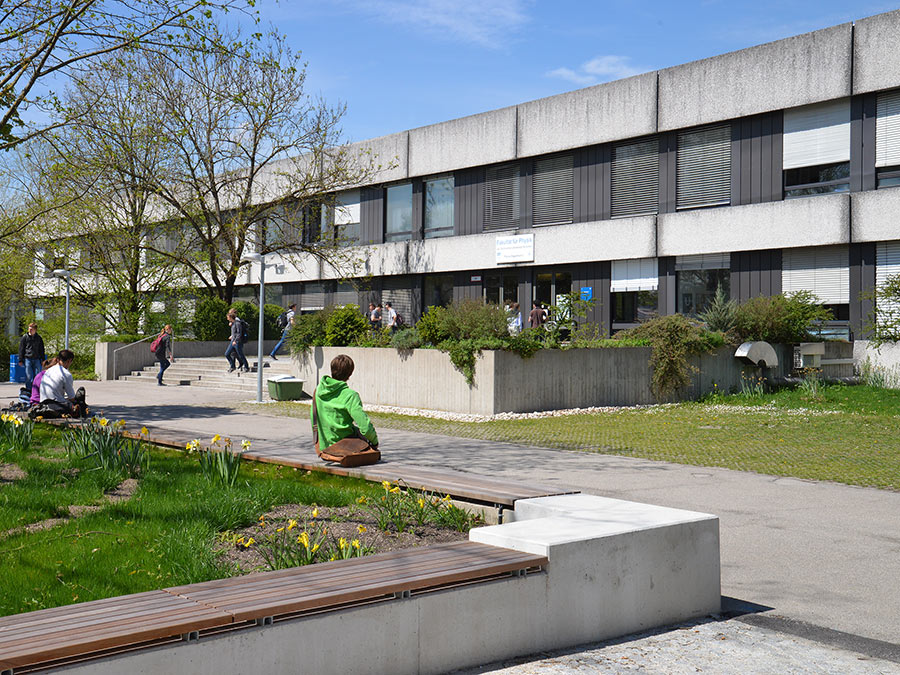TUM Department of Physics celebrates anniversary
50 years of cutting-edge research

Rising student enrolments and new tasks following the completion of the neutron source in Garching in 1957 prompted Prof. Heinz Maier-Leibnitz († 2000), Prof. Wilhelm Brenig, Prof. Wolfgang Wild and Prof. Nikolaus Riehl († 1990) to demand a new organizational structure for the physics institutes. They proposed implementing a department structure based on the American model.
In the new department with a flat hierarchy important issues as scientific orientation, allocation of funds and the contents of the lectures should be determined jointly. Maier-Leibniz, Brenig and Wild had experienced this efficient form of organization during their research tenures in USA.
Rudolph Mößbauer († 2011), who had studied at the Technical University of Munich under Prof. Maier-Leibniz and who was doing research in USA at the time, was awarded the Nobel Prize for his discovery of inelastic nuclear resonance absorption in 1961. He coupled his return to Germany with the aspired restructuring. He was among the first professors appointed by the new Department of Physics.
Abandoning the former structures with large individual institutes gave the TUM Department of Physics smaller, more flexible units that could, on their own and by a joint appointment policy, react more quickly to new trends and offer a broader spectrum of studies. When the German Research Foundation (DFG) in 1968 initiated the first collaborative research centers that specifically funded collaborations, the physics department was optimally structured and thus very successful.
Even the Bavarian university reform in the 1970s did no harm to the Department of Physics: Although a formal institute structure was reintroduced, the uncomplicated, collegial cooperation remained unchanged. At the request of then Dean Prof. Winfried Petry the Ministry reinstated the original department structure in the middle of the 1990s.
Today the Department of Physics is structured into the three domains of biophysics, nuclear, particle and astrophysics, and condensed matter physics. With approximately 1200 students, 250 degrees (BSc./MSc./Diploma) and 100 doctorates per year the department belongs to the largest physics faculties in Germany.
“Over the decades the department's philosophy has proven a continuous success. The department structure was essential for cooperative decision making and efficient action. It created the optimal basis for participation in research networks, national and international projects and last but not least in the Excellence Initiative. For many years the Department of Physics fosters a stringent and unique talent development. The idea of constant change and the achievement of excellence in research and teaching is rooted in the daily life of the department and provides a continuous high attractiveness and visibility”, says dean Prof. Johannes Barth.
TUM President Prof. Wolfgang A. Hermann: “Our physics department is a leading international site for research and teaching. It is thus no surprise that it participates in four of the five Munich Excellence Clusters. Our physicists come and go at large-scale research facilities like CERN. And new projects like the Center for Advanced Laser Applications or the TUM Center for Functional Protein Assemblies are already in the pipeline. Without our ambitious tradition since Maier-Leibniz, the new research neutron source, the largest single investment in the history of the university, would not have been possible.”
“The Technical University of Munich ranks in the top positions in national and international comparisons, both in academic teaching and in research,” says Dr. Ludwig Spaenle, Bavaria’s State Minister of Education. “The Department of Physics plays a decisive role in this success, because it is among the top international locations: Six Nobel Prize laureates provide a perfect example. The decision to structure the faculty as a department 50 years ago certainly represents a cornerstone for this extraordinarily successful record. To ensure that the scientists in the physics department continue to have excellent conditions, the Free State of Bavaria will continue to invest heavily in science and teaching, for example in the complete renovation of the physics building in Garching.”